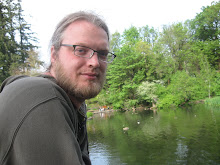Halloween.
It’s almost time for Halloween, and many of the readers of this newsletter may already know that Halloween is a traditional day pulled from Celtic holy calender of the year. It used to be called Samhain back in the day before the Celts had much of their culture extinguished and consumed by other more successful cultures. Samhain fell about halfway between the Autumnal Equinox and the Winter Solstice and most sources believe that it was around October 31st-November 5th that it used to be celebrated. It was the day of the ancestors, when the veil between the living and the dead was supposed by the people to be the thinnest.
A person might think that this would be creepy to some of our ancient brethren, but in fact, most of the historical data points to the idea that the dead were welcomed in to people’s houses. Doors and windows were unlocked and opened, and food was prepared specifically for the deceased. On this day, many of the Celtic tribes would extinguish their hearth completely and then relight it. This was a ritual that was supposed to welcome in the new year. For the Celts believed that death and darkness were the prerequisite for life itself.
In fact, an ancient Welsh tradition could very well be the precursor for our modern ritual of “trick or treating”. The Welsh would bake their cakes and the less well off would take on the collective identity of the local ancestors and go from house to house asking for food. If they were refused by a homeowner, it was very likely that some property damage would ensue to the uncharitable household. The culture as a whole supported this, as the homeowner had broken a taboo, by refusing food to the ancestors.
In modern culture, death is often thought as something to be afraid of, and this is quite a departure from what our Celtic brothers and sisters thought of it. Death was thought of as a natural and sacred part of life, and much of the association of this seasonal festival was based on the honoring of death and those that have passed through that particular gate before us. In modern times we often forget about our ancestors before they have even passed on. When they stop being productive, they can become a burden rather than a blessing.
It is not hard to understand why death was associated with this season. Several obvious natural themes were in effect at this time of season. Many of the animals that were abundant during the spring and summer were now gone, either flown away, or conserving energy through hibernation. The vegetation, especially the leaves on deciduous trees had fallen and were rotting slowly on the ground. Diseases associated with the change to the colder, wetter season had come and taken some of the weak and elderly kinsmen. Death was everywhere manifest, and the nights were getting longer and colder.
So internally, this was a time of year where people confronted their mortality, when they dove deep into themselves, when they contemplated the mysteries of life and death. This was also the time of year when the parts of the self that no longer served growth were sacrificed. So the questions of the season: How do I honor my ancestors? What is my relationship with death? What parts of myself no longer serve growth?
Wednesday, October 26, 2011
Subscribe to:
Post Comments (Atom)

No comments:
Post a Comment